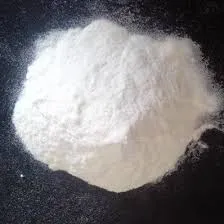
Nov . 11, 2024 11:38 Back to list
what is hydroxyethyl cellulose used for
What is Hydroxyethyl Cellulose Used For?
Hydroxyethyl cellulose (HEC) is a non-ionic, water-soluble polymer derived from cellulose, a natural polymer found in the cell walls of plants. It is widely used in various industries owing to its unique properties, including its ability to thicken, stabilize, emulsify, and create a gel-like consistency in formulations. This versatility makes HEC a popular additive in cosmetic, pharmaceutical, food, and construction applications.
1. Cosmetic Industry
In the cosmetics sector, hydroxyethyl cellulose is primarily used as a thickening agent and emulsifier. It improves the texture and viscosity of products such as lotions, creams, and gels, making them more appealing and easier to apply. Furthermore, HEC helps to stabilize emulsions, preventing the separation of oil and water phases in products like sunscreen and moisturizing creams. Its ability to form a film on the skin enhances the feel and provides a protective barrier, making it a popular ingredient in makeup products.
Moreover, HEC is considered safe for topical use and is suitable for sensitive skin, which further boosts its application in skin care formulations. Some brands utilize HEC to create clear gels, such as hair styling gels, since it does not interfere with the formulation’s transparency.
2. Pharmaceutical Applications
Hydroxyethyl cellulose is also a key ingredient in the pharmaceutical industry. It acts as a thickener and stabilizer in many liquid formulations, including syrups, suspensions, and drug delivery systems. Its ability to retain moisture is particularly beneficial in topical preparations, such as ointments and gels, where a persistent viscosity is necessary to ensure consistent application and absorption.
In controlled-release formulations, HEC can modify the release rate of active ingredients, improving therapeutic efficacy and patient compliance. It helps in the formation of hydrogels for drug release, which can be used in various application routes including transdermal or subcutaneous delivery.
what is hydroxyethyl cellulose used for

3. Food Industry
In the food industry, hydroxyethyl cellulose serves as a food additive, primarily as a thickening agent and stabilizer in sauces, dressings, and dairy products. It enhances the texture and mouthfeel of food products, while also preventing the separation of ingredients. Because HEC is non-toxic and approved for use in food applications, it is favored by many manufacturers aiming to improve product quality without compromising safety.
Furthermore, HEC is utilized in gluten-free baking products to improve the texture and moisture retention, emulating the properties that gluten would typically provide. This facilitates the creation of better-tasting and appealing gluten-free alternatives for consumers with dietary restrictions.
4. Construction Sector
In construction, hydroxyethyl cellulose plays a vital role as a rheology modifier in cement-based formulations. It enhances the workability, stability, and adhesion of materials such as plaster, mortar, and tile adhesives. Its water-retaining properties help to improve the curing process and prolong the setting time of these compounds, which is essential for achieving optimal performance.
HEC also contributes to the control of fluidity in construction materials, allowing for easier application while preventing sagging or slump in vertical applications. As a result, it aids in delivering consistent quality and performance in construction projects.
Conclusion
Hydroxyethyl cellulose is a versatile polymer that serves multiple roles across various industries. From enhancing the texture of cosmetic products to improving the stability of pharmaceuticals and food items, as well as facilitating construction processes, its applications are widespread and vital. The continued research and development of HEC formulations will likely lead to even more innovative uses, ensuring that this valuable ingredient remains crucial in diverse sectors. With its safe profile and functional benefits, HEC is set to maintain its significant presence in future product formulations and applications.
-
Versatile Hpmc Uses in Different Industries
NewsJun.19,2025
-
Redispersible Powder's Role in Enhancing Durability of Construction Products
NewsJun.19,2025
-
Hydroxyethyl Cellulose Applications Driving Green Industrial Processes
NewsJun.19,2025
-
Exploring Different Redispersible Polymer Powder
NewsJun.19,2025
-
Choosing the Right Mortar Bonding Agent
NewsJun.19,2025
-
Applications and Significance of China Hpmc in Modern Industries
NewsJun.19,2025







